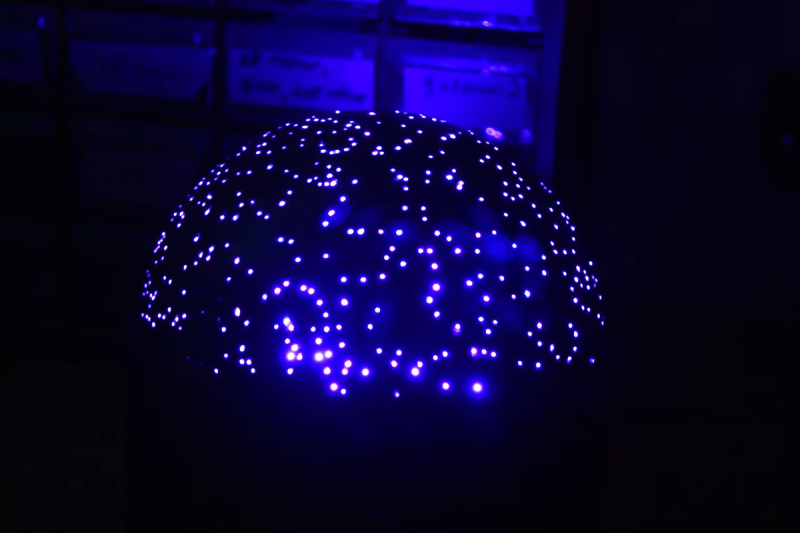It all started with a gift idea: a star-field lamp in the form of a concrete sphere with lightpipes poking out where the stars are, lit up from the inside by LEDs. When you’re making one of these, maybe-just-maybe you’d be willing to drill a thousand holes and fit a thousand little plastic rods, but by the time you’re making a second, it’s time to build a machine to do the work for you.
So maybe we quibble with the channel name “Unnecessary Automation,” but we won’t quibble with the results. It’s a machine that orients a sphere, drills the hole, inserts the plastic wire, glues it together with a UV-curing glue, and then trims the end off. And if you like crazy machines, it’s a beauty.
The video goes through all of the design thoughts in detail, but it’s when it comes time to build the machine that the extra-clever bits emerge. For instance, [UA] used a custom 3D-printed peristaltic pump to push the glue out. Taking the disadvantage of peristaltic pumps – that they pulse – as an advantage, a custom housing was designed that dispensed the right amount between the rollers. The rolling glue dispenser mechanism tips up and back to prevent drips.
There are tons of other project-specific hacks here, from the form on the inside of the sphere that simplifies optic bundling and routing to the clever use of a razor blade as a spring. Give it a watch if you find yourself designing your own wacky machines. We think Rube Goldberg would approve. Check out this video for a more software-orientated take on fiber-optic displays.
















Not that I’d want to make more than one of those but the results are fantastic.
I surprised myself when I hand laid about 1000 miniature copper plates on a ship model I built. It was relaxing, almost zen. I thought it would be a nightmare but was a great part of the build. Now on my next model I’m looking forward to treenailing the hull (this one isn’t coppered).
Seriously… I want to see your model. Details, please…
The entire build log for ‘ye
https://modelshipworld.com/topic/890-phantom-by-craigb-finished-model-shipways-solid-hull/#comment-13136
The Emma C Berry build is the one I will treenail.
best
Wonderful!
Are you familiar with the restoration of the Tally Ho on youtube? If not,you will greatly appreciate the craftsmanship on a 1:1 scale!
Yeah, sure, “unnecessary”. =^.~=
Strictly speaking, perhaps. However, it makes something rather complicated to do by hand far, FAR easier to accomplish, so I’m not sure it’s quite that unnecessary! Plus, it’s quite cool! Also, as you can see by the other examples he shows off, it allows him to make other “shapes” of displays on the same hemispherical surface.
That trick he figured out for grouping the fibers by location down to a square grid was also very impressive. I’ll have to keep that in mind should I ever want to do something like this in the future myself. It’s actually surprisingly tempting, despite the fact that I have almost no experience in much of the construction techniques he’s used here. However, learning is usually a good idea, right?
In case you didn’t notice, the celestial grid and coordinates hand you this segmentation already. You’ll find that most topological problems of this type already have a similar mapping, or once you have the concept it isn’t hard to do it yourself. For examples of custom approaches, consider the common process of retopologizing very high detail 3D models into simplified versions that follow the same contours, allowing for both animation and for a detailed reprojection of surface of the high detail model to the new low detail version.
Heh – very nice.
I did one of these in blender/3-d print a while back, and the journey was more fun than the destination
https://www.thingiverse.com/thing:2008473
Lithography is far simpler and less work, though obviously you had a hammer (lulzbot) and the itch, so it’s forgivable.
I love it when tech people have OCD…
Nice build, cool project.
Dundee observatory had a very similar idea it was called the planetarium and this was made by a member of staff /or a member of the astronomical society at the observatory. Unfortunately this attraction is now closed to the public but I remember going to see this when I was younger it was amazing.